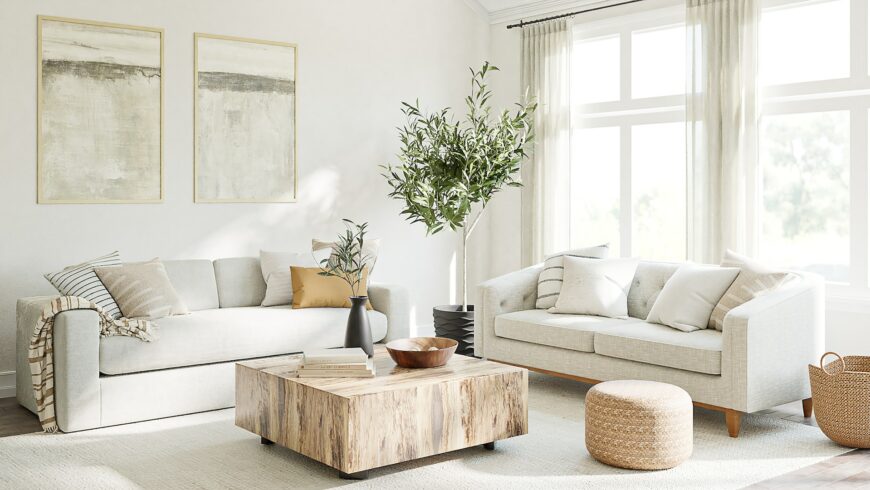Furniture is one of the most important parts of remodeling or redesigning a home, but it can also have a huge impact on the environment. How? The materials used to make our day-to-day furniture can affect the amount of natural resources, waste generated, and the bad emissions released during gathering, production, and transportation.
That’s why opting for eco-friendly and sustainable materials for furniture like table accessories can help a lot reduce the environmental footprint of your house while contributing to a healthier planet. In this article, we will explore some of the top options available and some extra tips.
What are eco-friendly and sustainable materials for furniture?
Eco-friendly and sustainable materials have a low impact on our environment, either because they are made from recycled and renewable sources, or because they last long and are durable. Those are important points to keep in mind while buying table tops or any other furniture.
A good example is wood, this material is an all-time favorite for sustainable and eco-enthusiast when it comes from a sustainable source. This means all wood that comes from sustainable and responsible logging, from companies that play a huge role in eco-friendly activities.
Using eco-friendly materials for furniture has a lot of benefits, and some of them are:

- By using materials or furniture made by eco-friendly companies, you’ll be supporting sustainable and responsible logging, which is a good alternative to minimize the impact of deforestation.
- Other sustainable materials conserve natural resources by using alternative materials, repurposing, and recycling.
- Help to reduce pollution and water by using biodegradable and recycled materials that can be composted or repurposed at the end of their use.
- Reduce greenhouse gas emissions by using production processes that are low in energy or reducing transportation.
- Improve indoor air quality and wellness by not using toxic chemicals or volatile compounds.
Some examples of eco-friendly and sustainable materials are:

Bamboo: Many people say that bamboo is the ultimate sustainable material for furniture due to several pros, like how fast it grows and the fact that you don’t kill the plant in order to harvest it. Bamboo is strong, lightweight, and malleable and has a lot of applications in furniture. Not only that, it’s durable, resistant and biodegradable.
Recycled wood: Recycled wood is wood waste that can be collected from various sources, like old furniture, and is usually recycled to give it a new life in other places or used to make frames or panels. It’s a great option since wood is a long-lasting material, which means it retains the natural beauty, reduces wood waste in landfills, and saves trees from being cut down.
Recycled plastic: This sustainable material is good for tackling the plastic issue and helps a lot in reducing the amount of plastic waste that will end IP in landfills or oceans, but some people are against it due to the process of making a new product. Recycled plastic can be used to make furniture frames, fabrics, panels, and other items. Some good draws about it, is how durable plastic is, resistant to weather, and easy to clean.
Cover image: photo by Daniil Silantev via Unsplash




